How-to videos are an important aspect of marketing. They help position brands as helpful, approachable and worthy sources of information. They also help boost retention with products and services.
But what makes for an effective how-to video?
Before we dig into the types of how-to videos you can make and how to create a powerful how-to video, let’s define what they are.
What is a How-to Video?
A how-to video is a clear set of instructions on how to perform a task. When created, how-to videos provide viewers with all the details they need to take action, and if required, learn how to troubleshoot when following instructions.
While video is powerful OTT content, and there are other types of videos that work to educate viewers, how-to videos are different. Often, they are confused with explainers and demo videos. Here’s how explainer and demo videos differ:
Explainer Videos
Explainer videos provide context for a product or service and why it’s needed. This includes introducing a problem your audience experiences, why the problem is important, what solutions are often applied without success and, finally, how a new product or service your brand provides is the answer.
Demo Videos
Demo videos walk viewers through how to use a product or service. Unlike how-to videos, they do not cover intricate details. Demo videos offer viewers an overview of certain features, how to access them and what purpose they serve.
Different Types of How-to Videos
There are five types of how-to videos. Each offers a unique approach to guiding viewers through tasks. Here’s how each works:
Presentation/Webinar
Presentation or webinar how-to videos are common. They are used to impart information to large audiences. These could be in-person or virtually. When used, the presenter’s voice becomes the key element. As one cannot fill a slide with all the details of a talk, the presenter will have to be clear and knowledgeable enough to fill the gaps.
For example, Yes To Tech shows how using a voiceover can be powerful when teaching their audience how to create a free webinar.
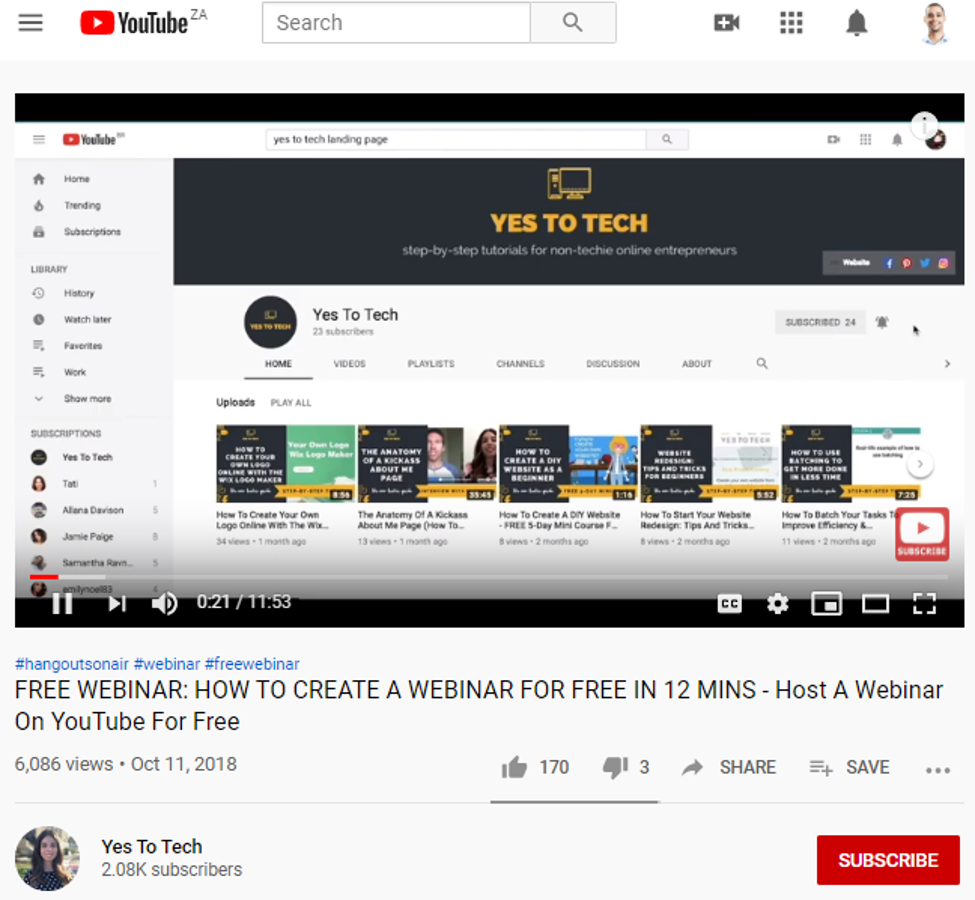
URL: https://www.youtube.com/watch?v=clULRUvCUCo
Screencast
Screencasts use a computer or smartphone screen recording to instruct viewers. These types of videos are commonly used for software tutorials.
Take Tech & Design’s “How to create a Gmail Account” video. It’s a clear, step-by-step walk-through that’s easy to follow.
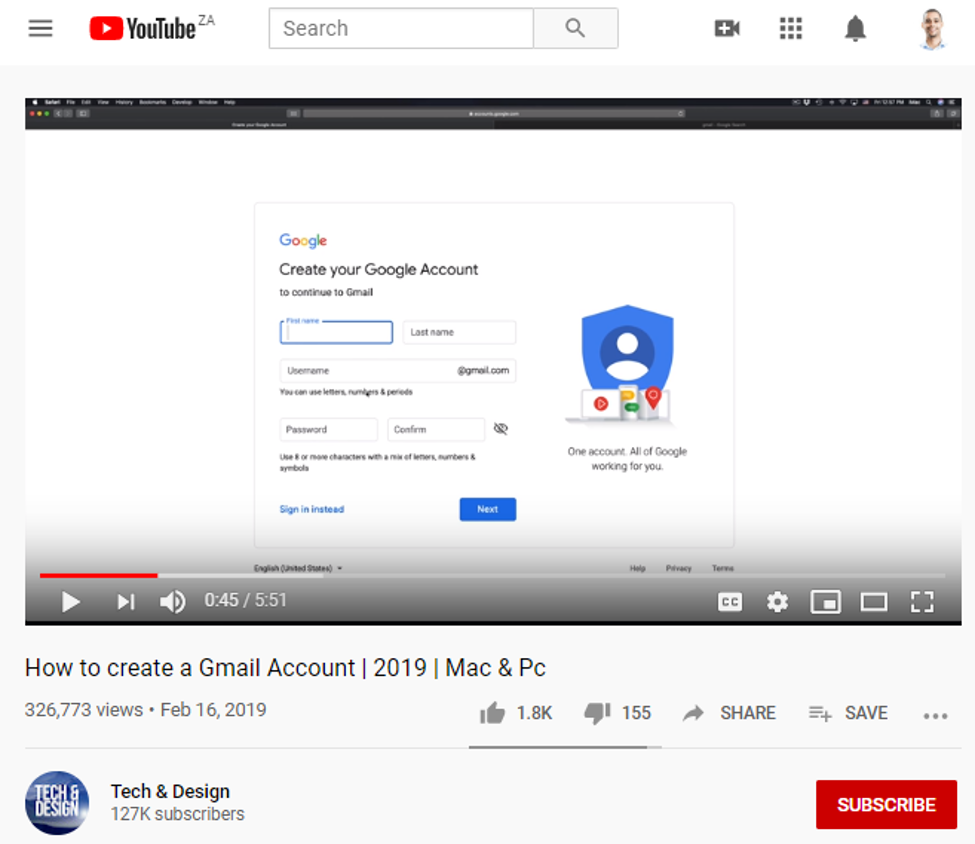
URL: https://www.youtube.com/watch?v=NXOCa9kzQsk
Micro-Video
Micro-videos are short, scannable and ideal for social media. They are typically accelerated videos designed to impart all the steps viewers need as fast as possible. Thel also do not include all the details you would receive in other forms of how-to videos.
In this example, Tasty shows how to speed-up a cooking video to make it easier to consume on Facebook.
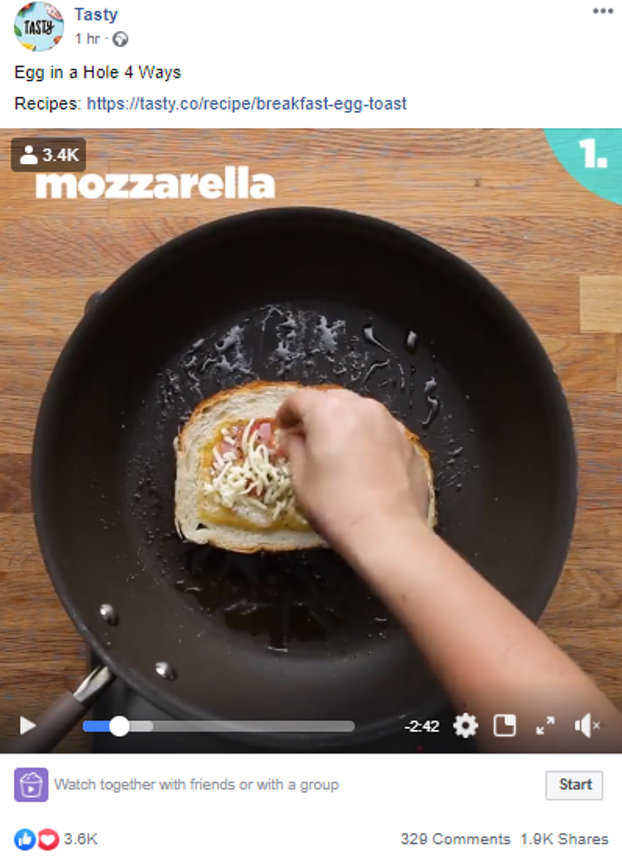
URL: https://www.facebook.com/buzzfeedtasty/videos/556106631919621/
Abstract and Aspirational
These videos are used to offer a simplified take on a complex topic. These videos typically use graphics and animations, making the task seem less complex. They also include a more inspirational look and feel, empowering the viewer to take action.
The School of Life shows how you can start a business using engaging animation.
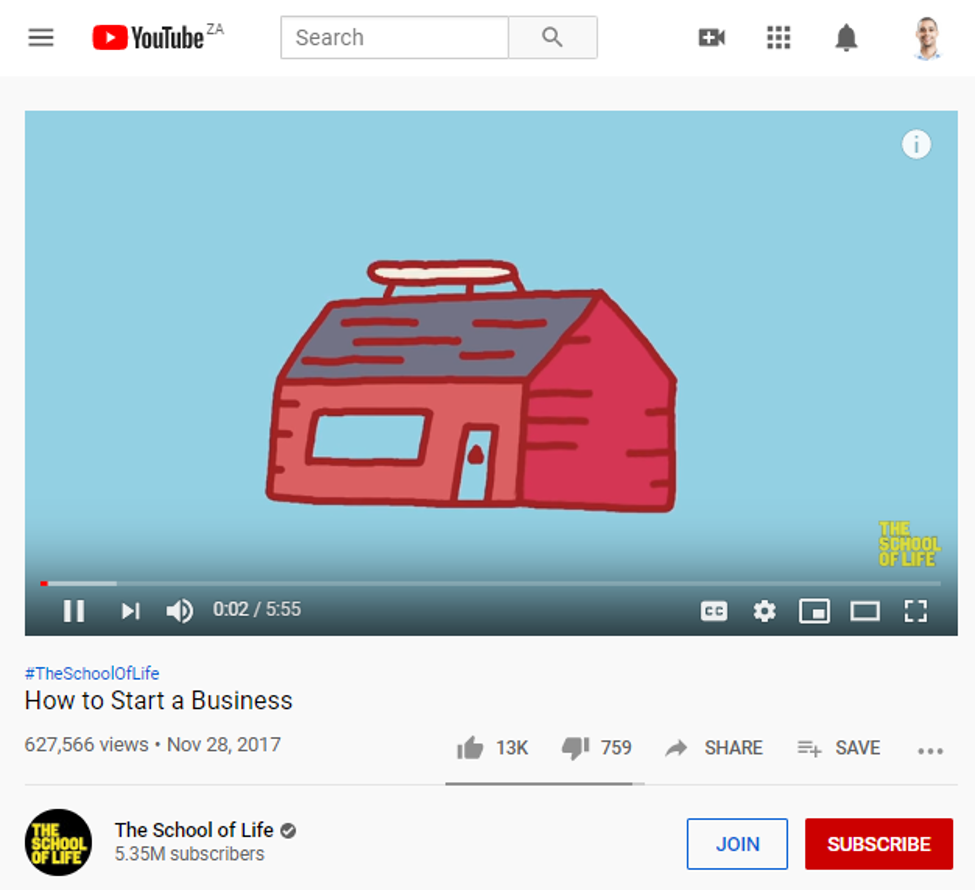
Pure Instructional
Purely instructional videos offer clear and simple steps on how to achieve a specific goal or outcome. In many cases, these are similar to micro-videos but are not accelerated.
For example, Real Simple shows how to cut a mango. While this seems like a simple task, viewers quickly learn that a paper towel plays an important role.
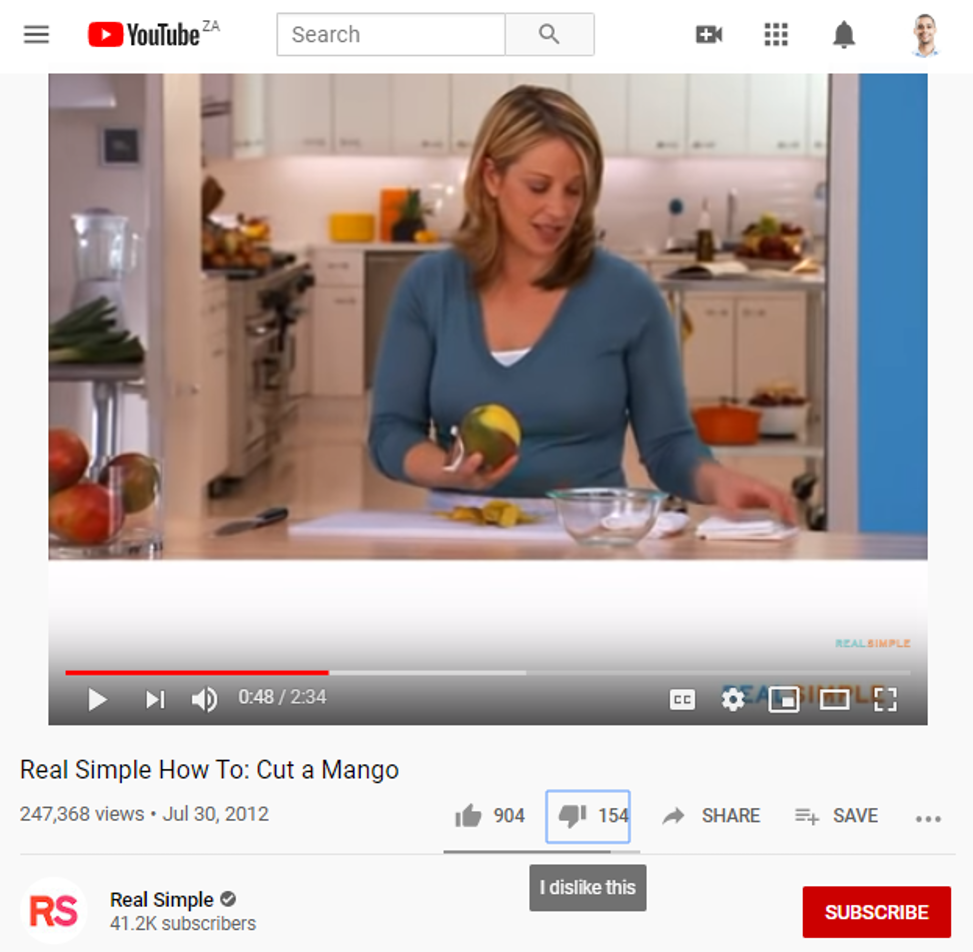
URL: https://www.youtube.com/watch?v=uaabynzqZic
How to Create an Effective How-to Video
Creating an effective video involves four essential steps. You’ve got to apply each to create a video that resonates with your audience but also delivers on its promise.
Step 1: Start With Why
Like other forms of marketing content, how-to videos are created with purpose. They are designed to give viewers the means of performing a task they previously could not. But before you create your video, you need to understand who your audience is and what they want to achieve.
This often means the difference between a how-to video that amasses views vs one that’s easily overlooked.
Understanding your audience isn’t just about a problem they face. It’s about knowing how to solve the problem and why a solution is important.
It’s about context.
Take Moz’s video on how to create 10x content. At the start of the video, Rand Fiskin explains why 10x content is important. Without this key piece of information, viewers would not find this how-to video as valuable.
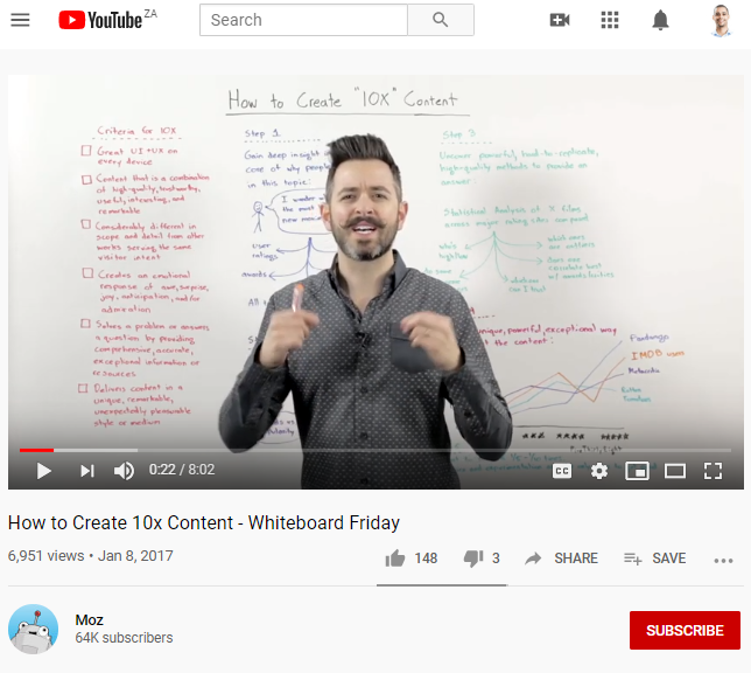
URL: https://www.youtube.com/watch?v=IX9mzdU7dps&t=137s
Step 2: Storyboard Your Video for Structure
Creating a storyboard is essential for all types of video you produce. Storyboards simplify the creative process. They also structure ideas and make it easy to provide a logical flow of information, especially when teaching viewers something new. Your storyboard should include all steps you plan to share. Steps must also be prioritized.
Next, create a simple script. Depending on how you plan to instruct your audience, your script should include enough information to communicate your idea clearly. And be sure to keep to share only what viewers must know to perform the task.
In some cases, this could mean a brief explanation here and there, but as this is more instructional, focusing specifically on the task at hand is ideal. Any more and you could confuse or overwhelm your viewer.
Finally, break your storyboard into frames and assign a length to each frame. The length will be based on the amount of information you need to share in each frame.
Step 3: Create Your Video
In order to create your video, you’ll need equipment. Depending on the format of your how-to video, you may or may not need a camera. For example, if you’re screencasting, you may want to start and end with just a view of your screen and nothing else.
If you’re how-to video, on the other hand, includes you appearing on screen, you’ll need a camera to capture yourself.
Sound will also be dependent on your choice of video format. If you plan to simply provide steps as captions, you could add background music to your video. Alternatively, voiceover recordings will require a mic.
Lighting would be required for any camera shot you plan to take.
Step 4: Edit
Editing is the final and important step in creating your how-to video. It’s where it all comes together. Here’s a set of elements you can include:
An Intro
Intros prepare your audience for information you’re about to share, but they’re also a great opportunity to get your brand out there. You can use them to share your logo, slogan and more.
An Outros
Outros are perfect for serving up calls to action for viewers. Be sure to include one to tell your audience what to do next.
Branding Elements
These include your logo, slogans or any other unique and distinguishing element that people will remember your brand by. But don’t include too many items all at once. As a rule of thumb, aim to make your brand known, but don’t make it feel overbearing.
Transitions
Transitions make videos engaging. While there are tons of options when applying transitions, yours don’t need to make yours sophisticated or add too many. You can settle for a change of camera shots or angles, including graphics or basic special effects.
Voiceovers
Editing also allows you to add voice overs. They can be especially helpful if you find the environment where you’re recording content to be filled with background noise that can’t be ignored.
Music and Sounds
While how-to videos are instructional, they don’t need to be stiff and boring. Adding a little background music can help set your viewers mood and make for a more engaging experience. But be gentle with the volume you use. If your background music is too loud, it can become a distraction.
Conclusion
How-to videos are helpful tools for brands and their audiences. Brands get to position themselves as trusted sources of information and stay top-of-mind with their audiences, while viewers learn how to perform tasks that leave them feeling empowered.
But take the time to plan yours. Understand who you’re creating your video for and how the steps you’ll provide solve a specific problem. Lastly, storyboard each frame and use editing to create a helpful and transformative end product.
